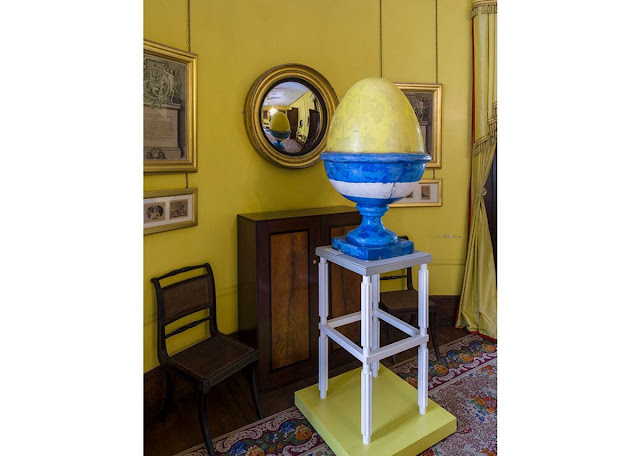Long ago and far away, I moved into a flat in Maida Vale in West London. Naturally I walked around, explored the area, looked at things, and I came across a curious but intriguing house in Ashworth Road. I don’t absolutely remember how it looked, and I certainly wish I’d taken a picture, but I didn’t take many photographs back then - few did - but I seem to recall a fairly conventional house made rather wild with wonderful and colourful geometrical addictions. I’ve been searching for an image online but haven’t been able to find one (perhaps somebody can supply - Hi Terry!), though I did find a couple of pictures of the interior, which obviously I never saw back then.
I soon worked out that the house belonged to the architect Terry Farrell, a name I barely knew at the time, though I did know a couple of his buildings. The Clifton Nursery in Covent Garden:
And the TV-am building in Camden, with the egg cups, one of which now resides in the John Soane Museum.
While searching for a picture of the outside of the Ashworth Road house I did find these words written by the man himself,
“Reflecting on my own experience at my house in Ashworth Road, Maida Vale – built among the lavender fields in the 1920s and connected with Central London by the Bakerloo line – I realized that the way I occupied it and changed it and turned it around over the years was all about making a city, a world inside my own home. But equally the city reflects in its streets the halls and corridors and circulation of a house.”
I think I know what he means, although given how few Londoners occupy entire houses, and given that you can easily pay 3 or 4 million quid for a house in Ashworth Road, it may not be an experience that many of us can share directly. And I had never previously heard about the lavender fields.
Farrell, of course, went on to design the MI6 (or SIS) Building in Vauxhall - a building which achieves of the considerable feat of looking both forbidding and playful at the same time, and also gloriously, defiantly conspicuous – a case of hiding in plain sight if ever there was one.
I happened to walk around the outside of it last week, and I must say it looks a lot less playful when seen up close. Yes, there are a few postmodern touches. like these quasi, or possibly faux, buttresses that are vaguely reminiscent of Frank Lloyd Wright:
But chiefly you notice there are various kinds of evil looking fences, spikes and barbs to keep you out. And security cameras too, of course.
These things are certainly a deterrent but I wonder how many miscreants walking past that fortress would feel the urge to break in, even if there were no deterrents at all.
Also, being a skeptic, I couldn’t help thinking these things might just be there just for show, a kind of theater or set dressing, and maybe the place was empty and all the spies were actually in an unmarked building in Billericay or some such place.
And the impending sense that all might not be quite as it appears (which arguably is as it should be with spycraft) was reinforced by these three lads on the adjacent building site by the river, lolling against the security fence and sitting on the steps of perimeter of the MI6 building.
True, they didn’t look like a threat to national security, but all the same you’d have thought that a polite, anonymous fellow from Intelligence might have popped out and had a quiet but firm word with them.










